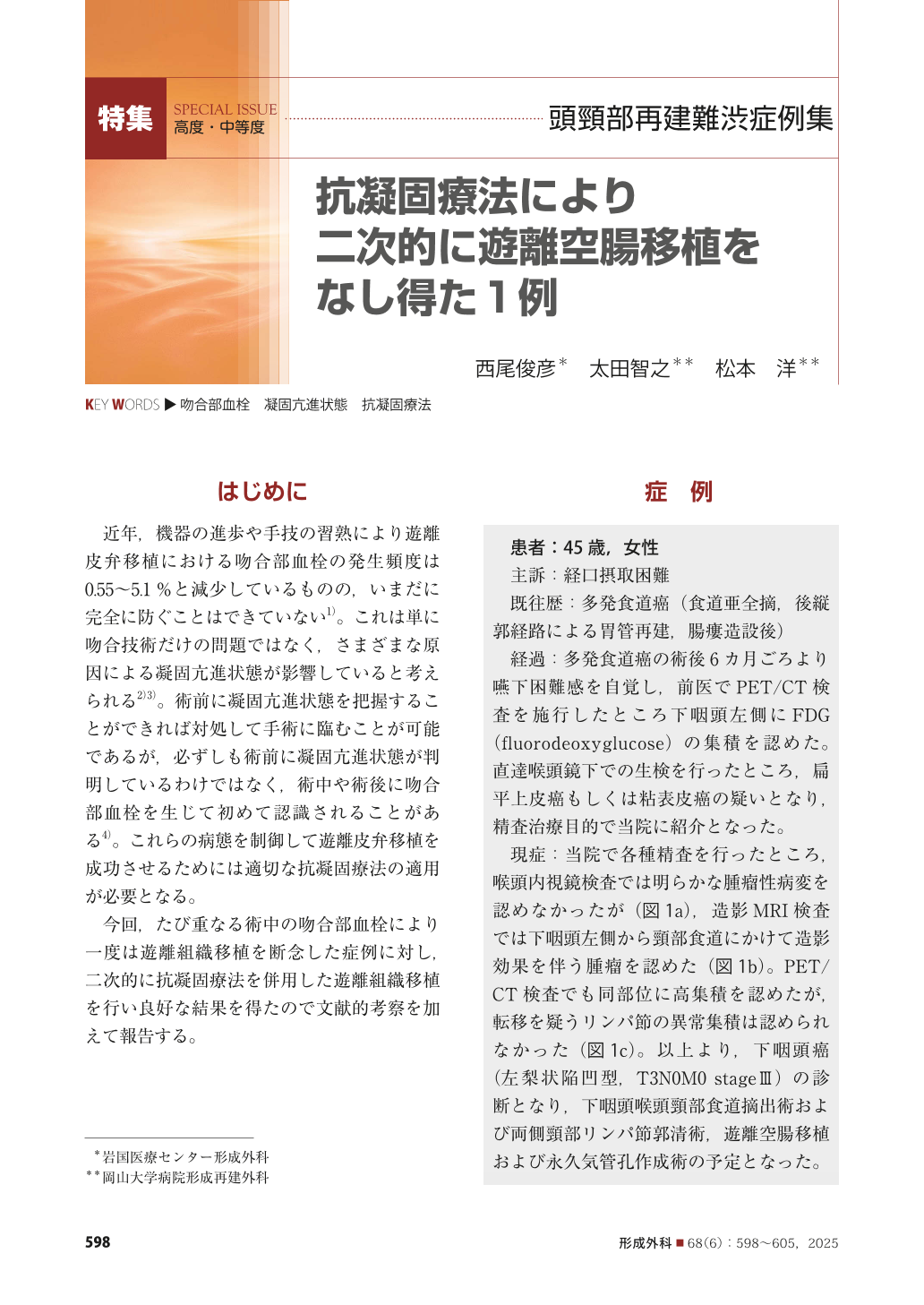Japanese
English
- 有料閲覧
- Abstract 文献概要
- 1ページ目 Look Inside
- 参考文献 Reference
はじめに
近年,機器の進歩や手技の習熟により遊離皮弁移植における吻合部血栓の発生頻度は0.55~5.1 %と減少しているものの,いまだに完全に防ぐことはできていない 1)。これは単に吻合技術だけの問題ではなく,さまざまな原因による凝固亢進状態が影響していると考えられる 2)3)。術前に凝固亢進状態を把握することができれば対処して手術に臨むことが可能であるが,必ずしも術前に凝固亢進状態が判明しているわけではなく,術中や術後に吻合部血栓を生じて初めて認識されることがある 4)。これらの病態を制御して遊離皮弁移植を成功させるためには適切な抗凝固療法の適用が必要となる。
今回,たび重なる術中の吻合部血栓により一度は遊離組織移植を断念した症例に対し,二次的に抗凝固療法を併用した遊離組織移植を行い良好な結果を得たので文献的考察を加えて報告する。
Although advances in equipment and expertise have reduced the frequency of anastomotic thrombosis in free flap transplantation in recent years, it is not yet possible to completely prevent its occurrence. This issue is not solely related to anastomotic technique; it is thought to be influenced by hypercoagulable states stemming from various causes. We performed a one-stage free jejunal transfer in a patient after a resection of hypopharyngeal cancer. The reconstruction was abandoned due to recurrent arterial thrombosis at the anastomosis. An immediate postoperative investigation suggested that anticoagulant factor deficiency due to vitamin K insufficiency contributed to the hypercoagulable state. After adequate postoperative nutrition, the patient successfully underwent another free jejunal transplantation. Thrombosis was prevented by anticoagulant therapy with heparin administration during the perioperative period. When free tissue transplantation is performed in a patient with a suspected hypercoagulable state, it is crucial to investigate the patientʼs predisposition to thrombosis in advance in order to prevent anastomotic thrombosis. Establishing collaborative hematological management preoperatively and providing appropriate anticoagulation during the perioperative period are also essential.

Copyright© 2025 KOKUSEIDO CO., LTD. All Rights Reserved.


